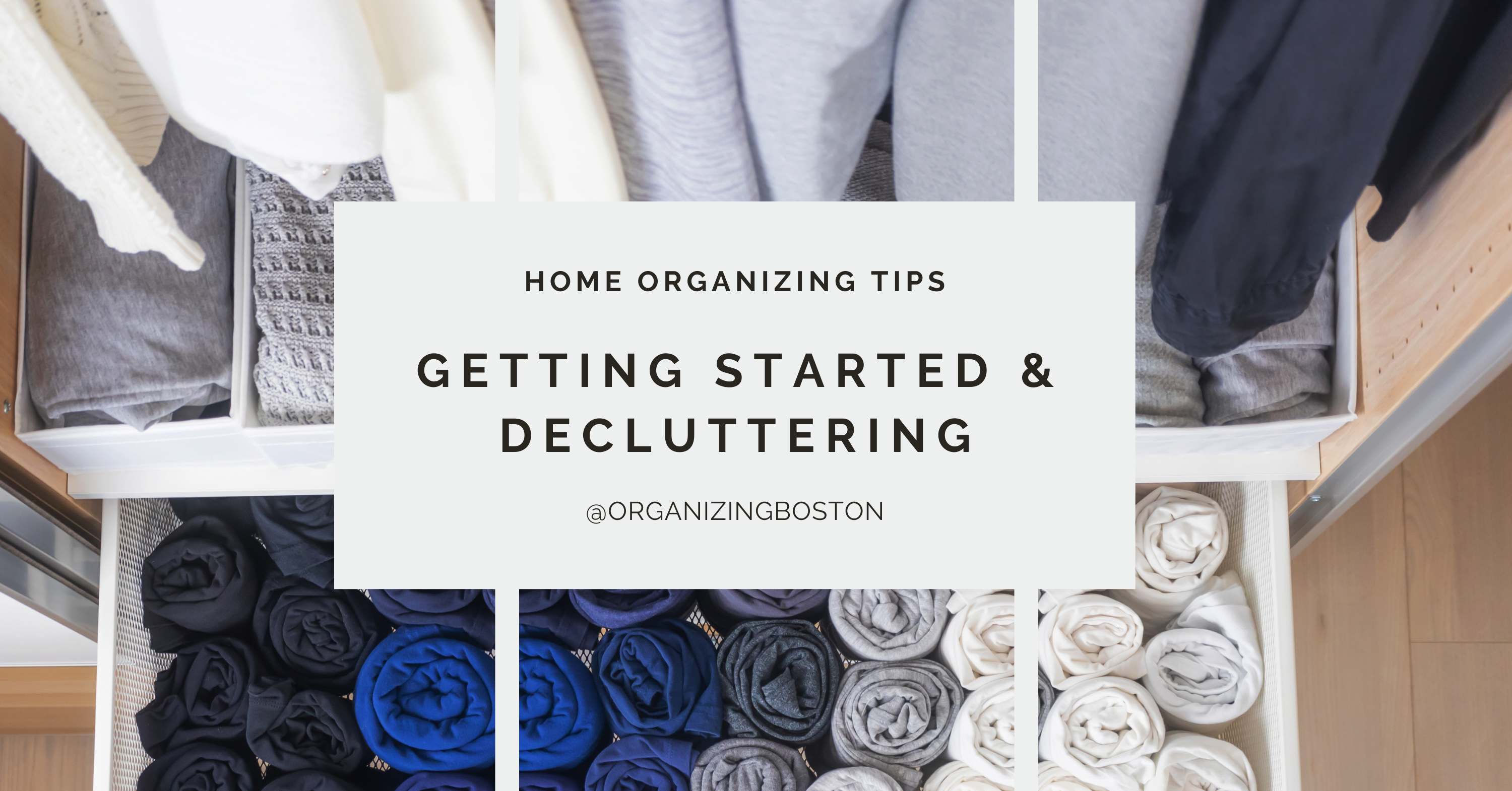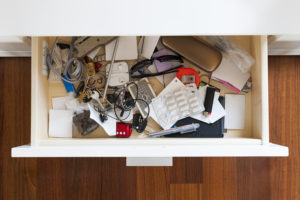Home Organizing Tips – Getting Started and Decluttering

20 May 2021
Home Organizing Tips – Getting Started and Decluttering
Getting started can sometimes be the hardest part of an organizing project! Many of our clients admit that the thought of getting started on a project makes them overcome with anxiety, they immediately feel paralyzed by the process and they often will shut the door or leave the space without attempting to even start. Does this happen to you?
The truth is, there is no perfect time to start and it’s not going to get any less overwhelming. Let’s go over some general tips to think about before you embark on any organizing journey.
Start Small
 If you are feeling overwhelmed with the idea of tackling everything, break it down into mini organizing sessions. Don’t think about the whole room or the whole basement. Start with a drawer, a closet, or a small corner of a room.
If you are feeling overwhelmed with the idea of tackling everything, break it down into mini organizing sessions. Don’t think about the whole room or the whole basement. Start with a drawer, a closet, or a small corner of a room.
This is exactly how professional organizers typically work with their clients, by biting off one little project at a time. This strategy not only helps keep you from getting overwhelmed, but it is usually more practical when you are trying to live or work in the space and don’t have entire days to devote to organizing.
Achieving small successes also helps build the momentum we all need to keep going! Once you can stand back and look at your progress and admire the effort and results, you will be motivated to continue.
Focus
Stay focused on that one project until it is complete. This is by far the most efficient way to get things done. However, if a certain project is particularly tedious, such as sorting through paperwork, it’s ok to take breaks or switch off to another project that involves a different type of work. The key is to make sure you clearly label your sorting system and where you left off, so you can easily return to it later.
In addition to staying focused, it’s also best to stay put! Don’t be tempted to return out-of-place items to other parts of the house – you will get distracted by other tasks that need to be done, which will only delay or derail getting your intended project done. Instead, use what I like to call a ‘belongs elsewhere’ bin and wait to distribute these items until the end of your session.
Think of returning items to their proper places as the icing on the cake. Once you have a newly organized space, no matter how small, you help make progress in other areas immediately, by returning the ‘belongs elsewhere’ categories to their proper places as the final step.
Avoid Interruptions
To go along with staying focused and staying put, it’s also important to take steps to avoid interruptions from kids, phone calls, emails and social media to the extent possible. We recommend that you schedule the time just as if you were meeting with an organizer for a session. Block off time in your calendar just as you would for any other appointment and use that time from beginning to end on your organizing project.
Be Prepared
Last but not least, it’s best to be prepared and have your supplies assembled so you won’t be interrupted by needing to go get something. Remember things like personal comfort as part of preparation. Get your bottle of water, cup of coffee, snack or box of tissues ready to have next to you. Wear comfortable clothing and take your fleece to the attic or garage when you know it will get chilly. We never begin an organizing session with a client without being physically comfortable enough to get the task under way.
Supplies
Speaking of supplies, here are a few we recommend for most organizing projects:
Cardboard boxes or bins – useful for sorting items into categories
- Trash bags – Useful for trash and donations; if you’re working with a large volume of stuff or multiple team members, it’s good to have a color-coded system (for example, black bags for trash and white or clear for donations)
- It can also be helpful to have markers, scissors, sticky notes and other office supplies – Be sure to label your boxes for sorting so you don’t get confused
- File folders for sorting and organizing paperwork
- Notebook or pad and pen – Chances are, during your organizing project you’ll come across things that need to be taken care of. Having a place to jot down a list of future to-do’s will help keep you focused on your organizing task at hand.
- Camera – Taking “before” and “after” photos of your project can be a great motivator and a visual way to track your progress.
- Cleaning supplies – When you clear off shelves and empty out drawers and containers, chances are, they will need a bit of cleaning before you get to put things back. The good news is, once you’ve de-cluttered your space, you’ll find that cleaning will be faster and easier with less stuff to work around.
- Label maker – Useful for labeling containers of items you’ll be keeping to help maintain your new system.
Decluttering

Decluttering is always the first, (and most important) step in any organizing project.
This is the step where you decide what to do with each item. Ask yourself:
Do I need it?
Do I use it?
Do I love it?
You should also ask yourself, do I have more than I need? Just because you choose to keep some, doesn’t mean you need to keep them all.
Your answers to these questions will help you determine whether you keep or get rid of an item. Always keep in mind your goals and the laws of physics! You only have so much space to store things and limited time to use and manage things.
Tips for Letting Go
If you’re having trouble deciding to let things go, here are a couple ideas:
When it comes to sentimental items, you could:
- Take photos
- Give it to a family member – just be sure they really want it
- Or keep a few, but not all
If you’re feeling guilty about getting rid of things, then do something positive with them. Make some money by selling your items online or through consignment. Or, donate them to your favorite charity.
And be sure to ask yourself these questions, especially if you’ve been bitten by the “but I might need it someday” bug:
- Could somebody else put it to better use?
- Would it be easy to replace if you do end up needing it again?
- Do you need to keep all of a category of items? (keep in mind how many you actually use and the space available to store them)
- Would it be better preserved in a different form? (for example, scanning old photos or photographing children’s artwork)
Follow these steps to help you get started on any organizing project. Just remember, start small and declutter first!
